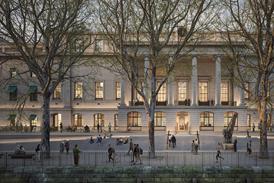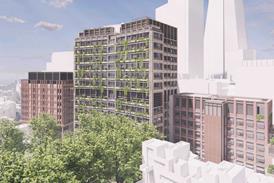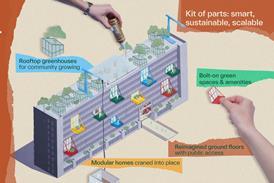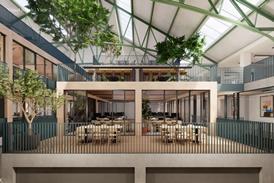- Home
- Intelligence for Architects
- Subscribe
- Jobs
- Events

2025 events calendar Explore now 
Keep up to date
Find out more
- Programmes
- CPD
- More from navigation items
Now it’s safe to go back in the water…

Swimming pools have reopened in time for the summer holidays. Christopher Beanland, author of a new book on open-air pools, dives in to lido culture
Swimming is recreation as ritual. The imagery is obvious enough: water comforts us because it’s the nearest thing we have to being back inside the womb. The religious iconography of immersion and blessing is in play too. And maybe there’s something dragging us back to when our forebears first wriggled out of the sea and on to the land. Perhaps the water never left our souls when it left our lungs. We are all, in a sense, Kevin Costner drinking his own piss in Waterworld. And if we continue to drive, fly and buy like it’s the last days of Rome then maybe once the waters rise we’ll all need to get considerably better at backstroke in the potentially dystopian decades to come.
If recent events have taught us anything it is that we love to be outside and we miss our routines – whether pub, playhouse or pool. Those of us for whom a daily swim is not just physical balm but mental too are ecstatic to have our lidos back. With their chemicals and fresh air, lidos are healthy, safe spaces. They were almost designed to be so, especially back when cities were filthier.
The 20th century was the apogee of the swimming pool. The Victorians fetishised death and ignored sex. Now it was to be the other way round. Sex and exercise make you feel more alive than anything else. Trailblazers like Jersey’s 1895 Havre Des Pas Pool kicked off this new era of pool building.
…
This is premium content.
Only logged in subscribers have access to it.
Login or SUBSCRIBE to view this story

Existing subscriber? LOGIN
A subscription to Building Design will provide:
- Unlimited architecture news from around the UK
- Reviews of the latest buildings from all corners of the world
- Full access to all our online archives
- PLUS you will receive a digital copy of WA100 worth over £45.
Subscribe now for unlimited access.
Alternatively REGISTER for free access on selected stories and sign up for email alerts






